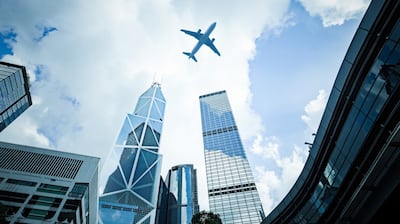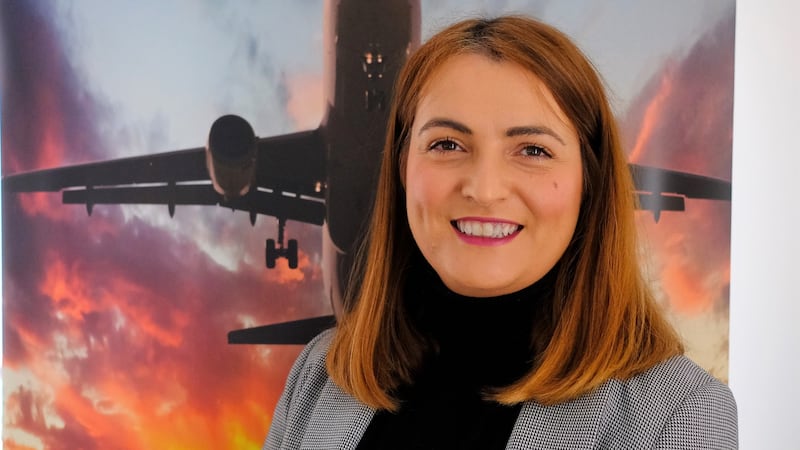Disruption doesn’t come near to adequately describing the impact of the Covid-19 pandemic on the global aviation sector. Air travel came to a complete halt in much of the world for several months in 2020 and again in 2021. Unprecedented levels of government support kept most airlines in business, and the aviation leasing sector also played a significant role. Nevertheless, the scale of the losses incurred by the industry was still breath-taking.

Despite the hammer blow wielded by Covid-19, Ireland still remains a key player in the global aviation leasing and finance industry.
[ The Irish Times ePaperOpens in new window ]
Airlines experienced a 60 per cent drop in passenger numbers during 2020, according to Dr Marina Efthymiou, assistant professor in Aviation Management and programme director of the MSc in management (aviation leadership) at DCU. “Overall, airlines carried 2,699 million fewer passengers in 2020 than in 2019. That resulted in a $371 billion loss in gross passenger revenue.”
Year-on-year comparisons usually look at passenger numbers and seats offered, she adds. “Seats offered fell by 50 per cent during 2020.”
That discrepancy with passenger numbers is explained by the “use it or lose it rule” for slots in the EU, which meant that the airlines initially had to keep flying empty planes in order to hold on to routes. “The European Commission changed the regulation on economic as well as environmental grounds and that allowed the airlines to stop flying empty planes.”
Things have been improving somewhat, however. “As restrictions eased and the vaccine programmes progressed, there was an increase in passenger confidence,” says Efthymiou.
“Comparing 2021 with the same period in 2019, seats offered reduced by 38-40 per cent. Passenger numbers fell by 46-49 per cent. That translates into a reduction of 2,000-2,200 million passengers and a revenue loss of $305 billion-$342 billion.”

Staggering, but an improvement nonetheless. “It varies from country to country,” she adds. “Personally, I regard Ireland as a bit slow in allowing travel abroad in comparison to other countries.”
Regulatory assistance went beyond slot rules. “The European Commission amended regulations to allow national governments to support the industry,” she says. “A number of countries offered bailouts with certain conditions, such as reducing the impact on labour.”
State loan
Lufthansa received the largest single support package of any European airline with a €3 billion state-backed loan and €6 billion recapitalisation package financed by the German Economic Stabilisation Fund. The Air France-KLM Group secured a €7 billion funding package comprising a €4 billion French state-backed loan with a syndicate of nine banks providing the remainder. The UK and US governments also stepped in with aid packages for the industry and its supply chain.
“Government support has been crucial”, says Joe O’Mara, head of aviation finance with KPMG in Ireland. “Overall, governments put in $200 billion in loans, grants, wage support schemes and some subsidies. All of this was done with the strategic objective of having airlines in place when the pandemic ended. There were actually fewer bankruptcies in 2020 than in 2019 as a result.”
The airlines were also fortunate to come into the crisis in reasonably good health, adds O’Mara. “Coming into the crisis, the industry had experienced an unprecedented 10-year period of growth and had large amounts of cash at their disposal. Cash has been key.”
The aviation leasing sector has also faced severe challenges but has come through the crisis remarkably well and may even emerge from it in a stronger position.
It is reasonable to think that it will take five years to recover, and that's the optimistic scenario
“The beauty of leasing was the ability to enforce the contract,” says O’Mara. “They could take the aircraft back and lease it to someone else. That has become a zero-sum game in Covid, when you’ve got no one else to lease it to.”
Airlines have naturally sought deferred payments from lessors, with some seeking a move to “power by the hour” as pay-as-you-use arrangements for aircraft. They have also sought to defer orders from the aircraft manufacturers. In some cases, the lessors have stepped in to take those orders and then come to agreements with the airlines to lease the aircraft to them instead. This reduced the need for airlines to raise cash and debt to purchase aircraft. In other cases, the lessors came to sale and leaseback arrangements with the airlines. This gave the airlines a much-needed injection of cash at a crucial time.
“About 25 per cent of the world’s aircraft were leased 25 years ago,” says O’Mara. “That’s now up to 45-50 per cent. Leasing accounted for 55 per cent of the market in 2020. There is a belief that it will go above 50 per cent overall in the coming years.”
Deeper relationships
In that context, it is also worth noting that the Irish leasing sector is responsible for about half of that total.
Leasing has become more attractive and mainstream from an investor’s perspective as a result of the crisis. “Lessors have been raising money on the capital markets cheaper than they were before the crisis. They have been raising capital at sub-2 per cent rates – and sub-1 per cent in some cases. They raised $9 billion in the first quarter of the year partly because there was lots of cash around and partly because of confidence in the leasing model. It’s not without challenges, of course. They are dealing with complicated restructurings, and we will see more airlines fall down. But they have probably developed deeper relationships with customers as a result.”
And they have been building new relationships. “Blue-chip airlines that weren’t using leasing before this are now more open to all forms of financing,” says O’Mara. “Most of the government cash will have to be repaid, and many airlines around the world are going to be extremely cash constrained. As you go on you are going to see more airlines using the leasing channel.”
A full recovery for the sector will be a long time coming, according to Efthymiou. “It is reasonable to think that it will take five years to recover, and that’s the optimistic scenario. The loans the airlines have received mean they will come out of it with very significant debt. And profitability is very low in the European industry. You make more money selling apples than running an airline. I don’t think airlines will be buying a lot of planes in the next five years, but some will have an ageing fleet and will have an incentive to reduce their environmental impact and their fuel bill. Leasing may play a more important role there as they may choose to lease rather than acquire the assets. But you have to look at it market by market and airline by airline.”











